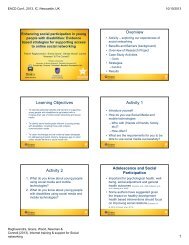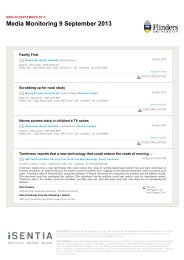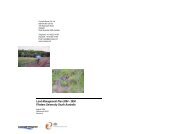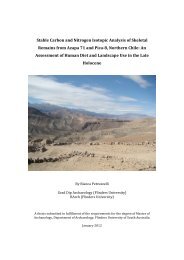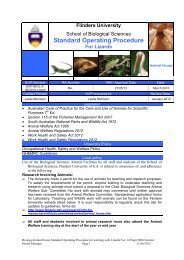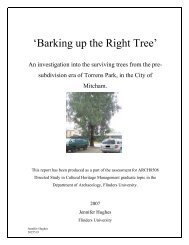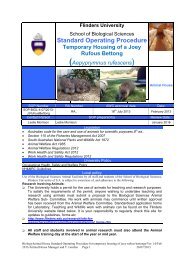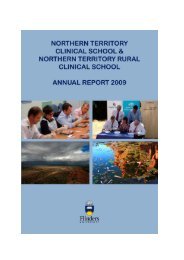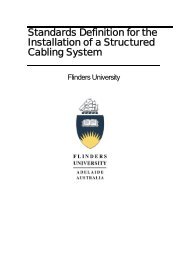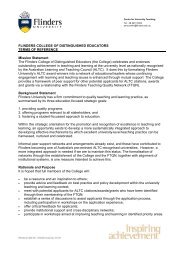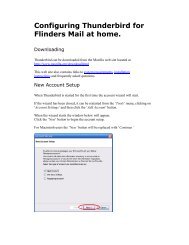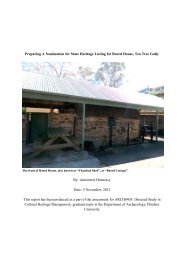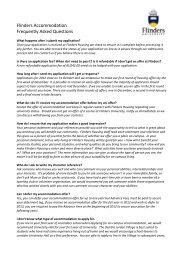Flinders Biomedical Engineering Equipment Orientation
Flinders Biomedical Engineering Equipment Orientation
Flinders Biomedical Engineering Equipment Orientation
Create successful ePaper yourself
Turn your PDF publications into a flip-book with our unique Google optimized e-Paper software.
Medical Flowmeters - Basics<br />
<strong>Flinders</strong> <strong>Biomedical</strong> <strong>Engineering</strong><br />
A joint department of <strong>Flinders</strong> Medical Centre<br />
and <strong>Flinders</strong> University of South Australia, Faculty of Health Sciences<br />
What does it do? Flowmeters measure and control the flow of medical gases such as oxygen, air and nitrous oxide.<br />
Physiology Medical gases such as oxygen, breathing air and nitrous oxide are used in anaesthetic machines,<br />
ventilators, or directly to the patient by means of a breathing mask. Oxygen is used for patients with<br />
breathing problems to increase the level of oxygen into their blood. A mixture of nitrous oxide with<br />
oxygen (entonox) is used for pain relief or relaxing muscles. Medical air and oxygen are used on<br />
ventilators. Oxygen, nitrous oxide and medical air are used on anaesthetic machines. Flow meters are<br />
used in all of these applications<br />
How it works Flowmeters consist of a tapered glass tube containing a ball which floats on the<br />
stream of moving gas. As the gas flow rate increases, the ball is carried further<br />
up the tube, indicating the flow rate. Flowmeters are specifically constructed for<br />
each gas, since the flow rate depends on both the viscosity and density of the<br />
gas. Only the correct tube and ball can be used to repair flowmeters Some Flow<br />
Meters have a dial type gauge to measure flow. Again only the correct gauge<br />
can be used to repair the flowmeter.<br />
Units of measurement Flow : l/min<br />
Typical values 0-15 l/min<br />
Picture of equipment<br />
Flow meter valves<br />
The needle valve is the most common means of controlling gas flow rate. As the valve is opened, the<br />
orifice around the needle becomes larger and flow increases. When closing, the valve must not be<br />
over-tightened - this will drill out the orifice and cause it to leak<br />
Oxygen (White) and Air (Black & White) Flowmeters, Additional “Safety AIR Guard” has been fitted to the Air flowmeter<br />
<strong>Orientation</strong> pages created and compiled by FBE: mailto:fbe.support@health.sa.gov.au<br />
Back



